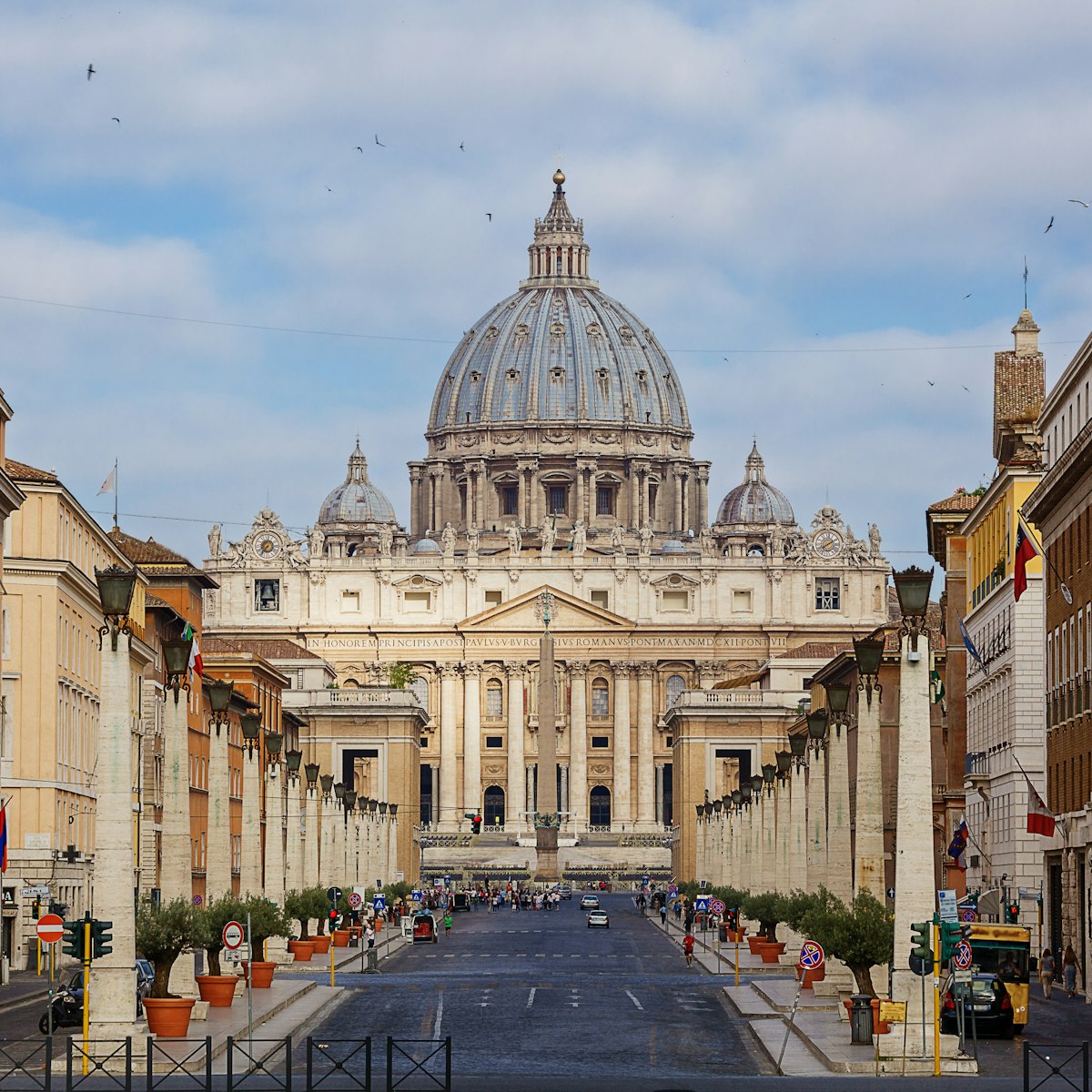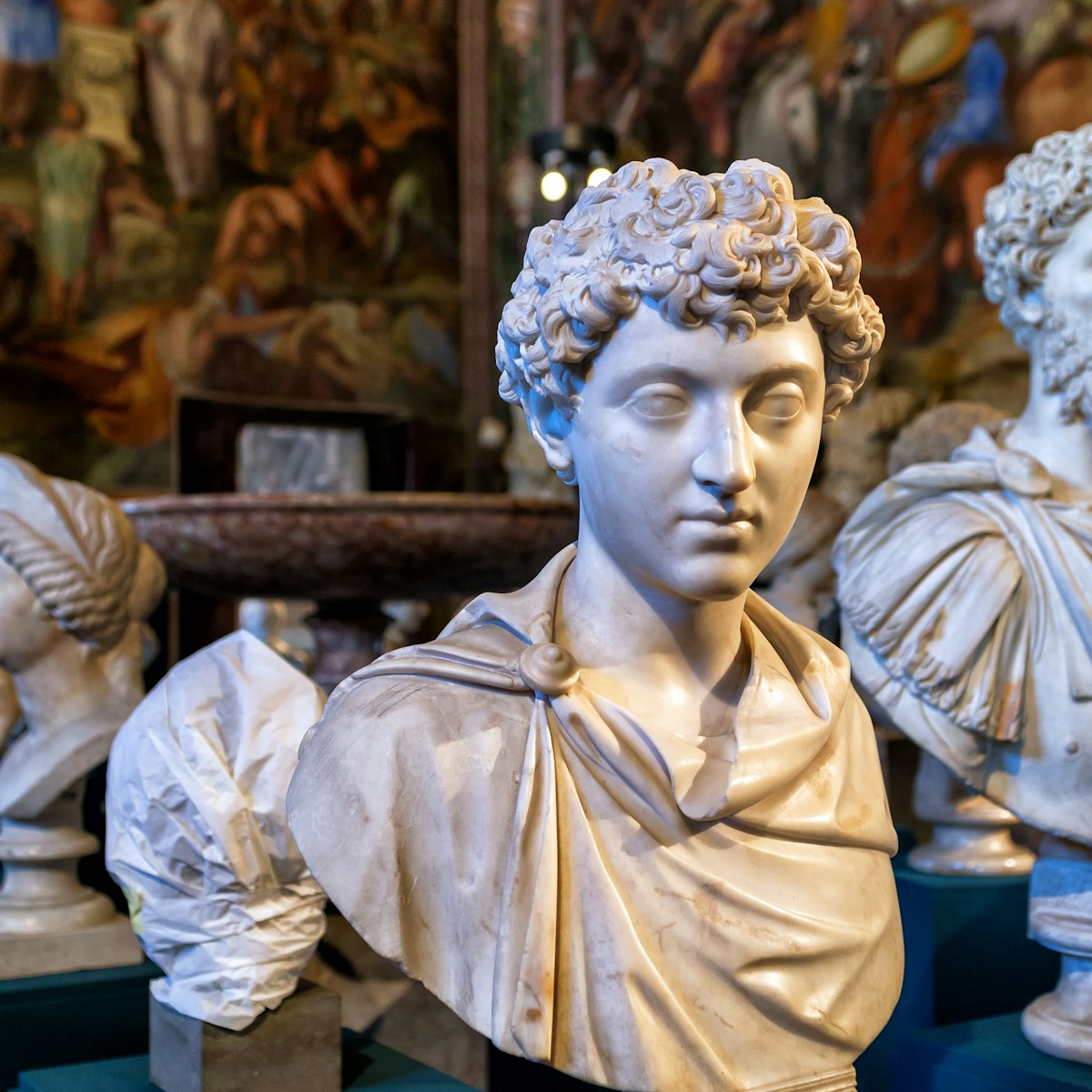Named after consul Appius Claudius Caecus, who laid the first 90km (56 mile) section in 312 BCE, ancient Rome’s regina viarum (queen of roads) was extended in 190 BCE to reach Brindisi. Via Appia Antica has long been one of Rome’s most exclusive addresses, a beautiful cobbled thoroughfare flanked by grassy fields, Roman structures and towering pine trees.
While a section of the Appia Antica is open to motorized traffic – which can be intense, especially during peak hours – shortly after the Basilica di San Sebastiano begins the protected area that only residents can access by car.
Ancient buildings, ruins and history
The spectacular Villa di Massenzio is the first major archaeological area you’ll encounter past the Basilica. The remains of the circus built under the orders of Maxentius (278–312 CE) – an arena that could host up to 10,000 of the emperor’s guests – span for 500m (1640ft) across a green field, next to the red brick ruins of the palace and the mausoleum.
The circular mausoleum dedicated to Cecilia Metella, the daughter of one of the richest Roman families, was built between 30 and 10 BCE. It sits in front of the roofless Chiesa di San Nicola, one of the few Gothic churches in Rome dating back to the 14th century.
Most splendid of the ancient houses was Villa dei Quintili, which was so desirable that Emperor Commodus murdered the Quintili brothers who owned it and took it for himself. The ruins – surrounded by wild orchids during springtime – still show the refined decorations and marble floors that made this residence one of Rome’s most highly prized.
The Appian Way has a dark history – it was here that Spartacus and 6000 of his slave rebels were crucified in 71 BCE, and it was here that the early Christians buried their dead in 300km (186 miles) of underground catacombs. You can’t visit all if them, but three major catacombs – San Callisto, San Sebastiano and Santa Domitilla – are open for guided exploration.
Tips and other practicalities
The Centro Servizi Appia Antica visitor center is located near the park’s northern edge and is easily reached on public transportation. Buses 118 and 218 stop steps away from the office, where you can pick up maps with detailed information about the sights found along the way.
The most pleasurable way of exploring the Appian Way is by foot and bicycle. Bikes are available at Ecobike Roma, the rental service affiliated with the Parco Regionale dell'Appia Antica’s official visitor center. Prices start at €12 per day, discounts are available when you book your bike online.
The Appia Antica Caffè makes for a great refueling stop along the way – whether it is for a quick espresso, a light lunch, or an evening aperitivo on the way back.










